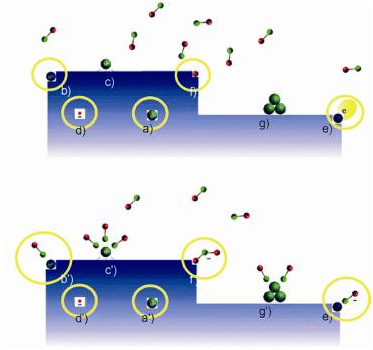EPR CHARACTERIZATION OF CATALITYCALLY ACTIVE AND PHOTOACTIVE INORGANIC MATERIALS
WG2 members: Elio Giamello, Maria Cristina Paganini, Mario Chiesa, Stefano Livraghi, Sara Maurelli, Chiara Gionco
homepage: www.epr.unito.it
Our research activity is focused on the surface chemistry of polycrystalline inorganic materials and metal oxides. Particular attention is paid to elucidate the nature and structure of the surface active sites and of the reaction intermediates in heterogeneous catalysis and photocatlysis. Beside various structural, microscopic and physical methods typically used in surface chemistry we widely employ Electron Paramagnetic Resonance (EPR) techniques (both in the CW and in the Pulse modes) to study:
Adsorbed paramagnetic atoms and molecules
Transition metal ions in bulk or at the surface
Charge separated states (electrons and holes)
Point defects (F centers, V centers)
In all these cases EPR spectroscopy can deeply probe those features of the molecular structure related to the unpaired electron charge distribution providing detailed answers to relevant questions, such as the structure and reactivity of surfaces by themselves and surfaces with atoms or molecules on them or in the discovery of the basic mechanistic steps involved in surface reactivity and catalysis.



